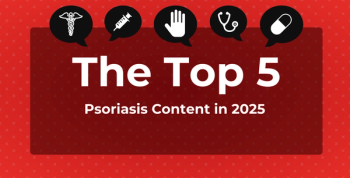
Substantial Increase in Rates of Insomnia, Sleep Apnea Reported Among US Military
Over a 14-year period, active-duty US military members reported a marked 45-fold increase in rates of insomnia and 30-fold increase in rates of obstructive sleep apnea.
Active-duty US military members may be at a markedly increased risk of developing insomnia and obstructive sleep apnea (OSA), with female service members potentially at increased risk of underdiagnosis, according to study findings published in
As the 2 most common clinically significant
In 2 prior studies, US Army soldiers were shown to exhibit rates of insomnia at 19.9% and 22.76%, while US Navy soldiers conversely showed lesser prevalence rates of 3.4%. Notably, there are no studies that have systematically evaluated the prevalence of OSA in the US military.
“There are inherent differences in the branches of the military in terms of their deployments, missions, and operational exposures which could impact their sleep and subsequent development of sleep disorders,” wrote the study authors.
Seeking to report and compare OSA and insomnia diagnoses across branches of the US military, the study, led by The University of Texas Health Science Center at San Antonio (UT Health San Antonio), derived medical codes from the
Secondary aims of the study were to determine if the change to the International Classification of Diseases, Tenth Revision (ICD-10) from ICD-9 impacted diagnostic rates of insomnia and OSA in military personnel. Single sample
No medical code data was available for the Coast Guard or Space Force.
In assessing the 14-year period, incidence rates of OSA (per 10,000 service members) in the US Department of Defense ranged from 11.8 in 2005 to 333.8 in 2016, with rates of insomnia exhibiting significant increases from 5.7 to 272.4 in that time span, as well.
Significant differences in diagnoses for both conditions were found between the military service branches:
- Service members of the Air Force (n = 92,292), Navy (n = 84,811), and Marine Corps (n = 28,472), presented with fewer observed OSA cases than expected (n = 94,925, n = 94,525, and n = 55,140, respectively)
- Service members in the Army presented with more observed OSA cases (n = 188,283) than expected (n = 149,666)
- Service members of the Air Force (n = 89,040), Navy (n = 30,607), and Marine Corps (n = 75,108), similarly presented with fewer observed insomnia cases than expected (n = 93,022, n = 54,263, and n = 93,022, respectively)
- Service members in the Army presented with more observed insomnia cases (n = 192,840) than expected (n = 147,286)
For OSA, service members most often diagnosed were married (79%), in the enlisted pay grade of E-5 to E-9 (64%)—indicating that they were non-commissioned officers—White (61%), males (92%), in the Army (48%), and 40 years of age or older (39%).
These trends were also found for insomnia, in which those most often diagnosed were married (73%), in the enlisted pay grade of E-5 to E-9 (59%), White (61%), males (88%), in the Army (50%), and 40 years of age or older (32%).
"The most surprising result was that military members in the Army had the highest rates of OSA and insomnia diagnoses,” the study’s principal investigator Vincent Mysliwiec, MD, sleep medicine physician, retired US Army colonel, and professor of research in the Department of Psychiatry and Behavioral Sciences at UT Health San Antonio, said in a
“These findings are concerning because service members across the military branches are otherwise healthy and have similar physical requirements. Their sleep disorders developed and were diagnosed while they were in the military.”
For the study’s secondary outcome, the transition from ICD-9 to ICD-10 codes revealed significant differences in the amounts of OSA diagnoses only (P < .05).
Furthermore, female service members were indicated to be underdiagnosed in both disorders (P < .001), which was expected for OSA but not insomnia.
"This is a concerning finding. We will need to conduct more research to better understand what contributes to the potential underdiagnosis of insomnia in active-duty women," said Mysliwiec.
Reference
Moore BA, Tison LM, Palacios JG, Peterson AL, Mysliwiec V. Incidence of insomnia and obstructive sleep apnea in active duty United States military service members. Sleep. Published online February 3, 2021. doi:10.1093/sleep/zsab024
Newsletter
Stay ahead of policy, cost, and value—subscribe to AJMC for expert insights at the intersection of clinical care and health economics.








































